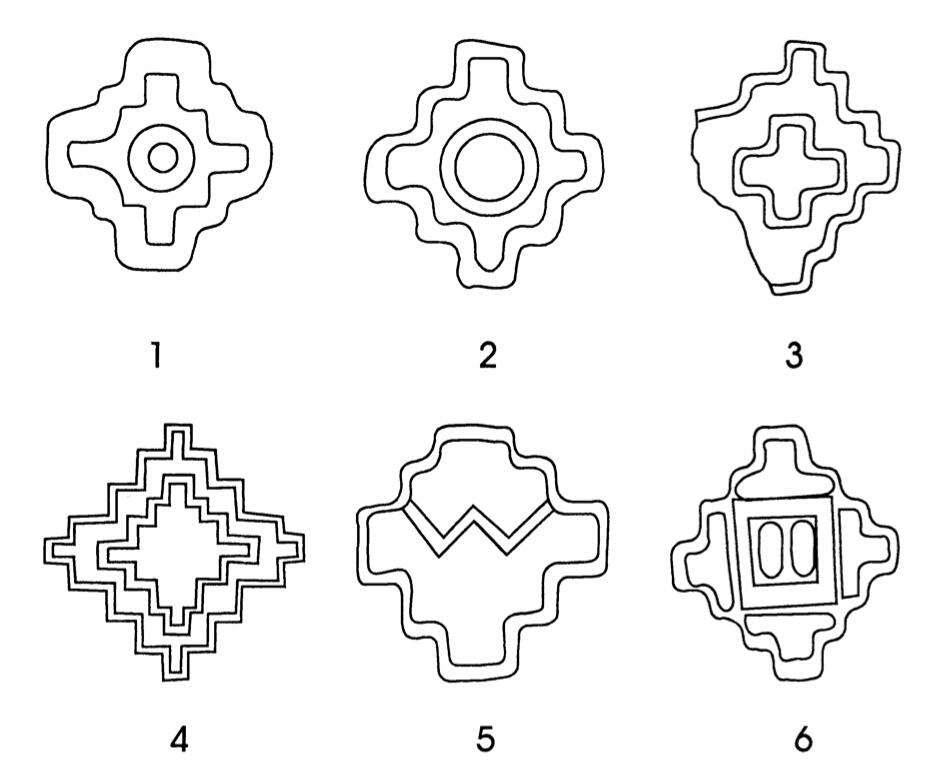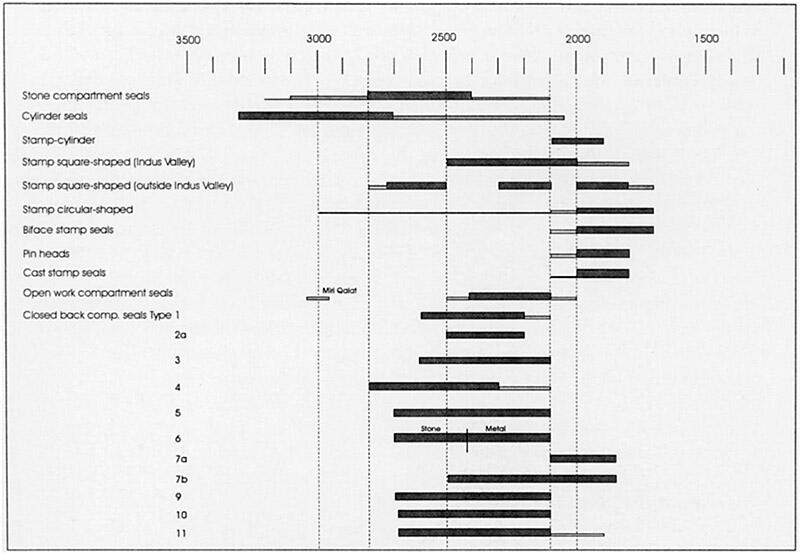A learned and detailed look at seals and seal types from the central Asia just north of Afghanistan, Afghanistan and western Iran in relationship to the ancient Indus valley seal types, and how different kinds of seals seem to have predominated at different times and in different places. Not only are there a myriad of connections, but the paper reinforces the fact that seals, while highly specific to a certain place (or even person) were also part of a larger system of trade and representation across the wider region.
For example, the Image 1, above, shows examples of "stepped lozenge" seals; "overall this type is distributed over a time span ranging from the 27th to the 22nd century B.C. and covers an area taking in central-eastern Iran, central-northern Afghanistan, southern Turkmenistan, Margiana and southern Bactria" writes Salvatori. Other types show similarly extensive distribution indicating, once again, how even in the earliest part of the Bronze Age, objects and practices traveled widely. This rigorous paper breaks out all the different kinds of geometric – cloverleaf, star and corolla-like, Maltese cross, etc. – and even zoomorphic and anthropmorphic designs to be found across cultures. Most helpfully, it then lists different, as far as is known chronologically by major types [Image 2].
The focus on seals – both the smallest physically, but broadest cultural self-representation – allows the author to draw important insights: "However, it is clear that as regards figurative complexity inside the Bactria-Margiana macro-region, at the present state of our knowledge, Bactria takes on a configuration of its own that is to some extent distinct from that of Margiana. This obvious situation at the level of seal production is in our opinion to be interpreted as a definite indication of an expected phenomenon, that of regional specificity within a substantially macro-regional cultural koine [common cultural language]. The possible determinants of these regional differences is still a field to be explored at the level of both the mechanism of relations with other regions and perhaps also as regards the levels of socio-economic structuring inside the two regions. What appears undeniable is the fact that, from the point of view of the material culture in its broad outlines the two regions display a clear-cut and substantial homogeneity during the second half of the 3rd millennium B.C., which justifies speaking of a Bactro-Margiana civilization until this period" (p. 124).
Images
1: Fig. 11-1. Type 5.1 (redr. from Ferioli, Fiandra & Tusa 1979: fig. 1e). Type 5.2 (redr. from Casal 1961: pl. XLV.B.i); 3. Type 5.3 (redr. from Tosi 1983: fig. 74); 4. Type 5.4 (redr. from Tosi 1969: fig. 280); 5. Type 5.5 (redr. from Masson 1981a: pl. XVI. 10); 6. Type 5.6 (redr. from Casal 1961: pl. XLV.B J);
2: Chronological Assessment of the main classes of seals.




